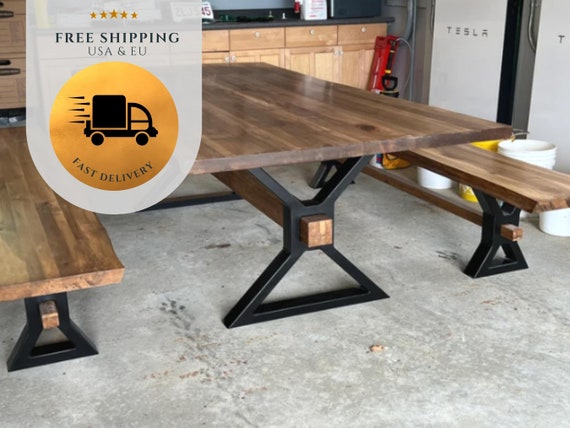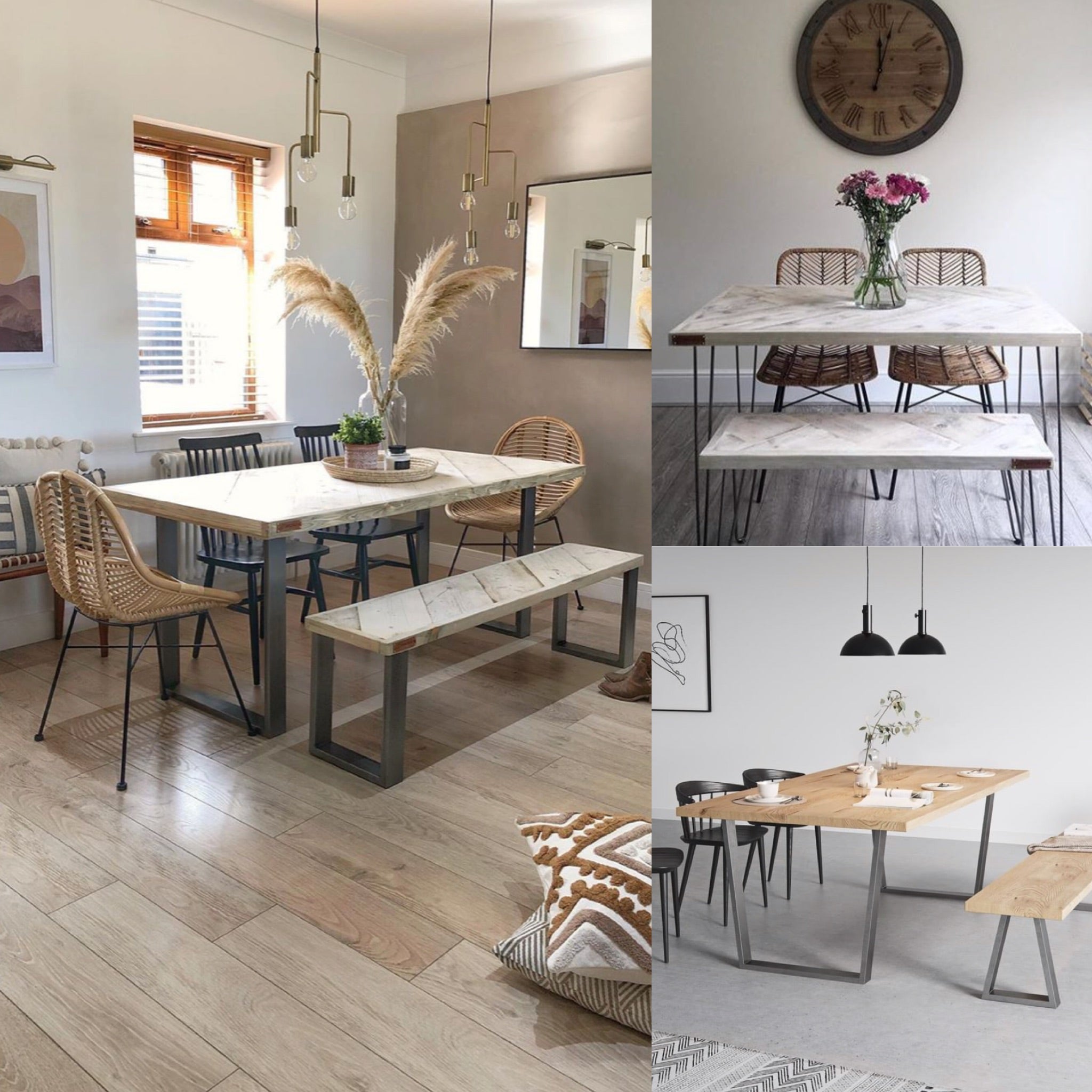Add Charm and Elegance to Your Space with Distinct Dining Room Table Legs
Add Charm and Elegance to Your Space with Distinct Dining Room Table Legs
Blog Article
From Standard to Modern: Find the Perfect Dining-room Table Legs for Your Design
The option of dining area table legs plays an essential role in specifying the general personality of your area, bridging the void between typical craftsmanship and modern-day visual appeals. While timeless styles such as cabriole and turned legs evoke a feeling of ageless sophistication, modern styles like barrette and geometric options offer a chance for striking aesthetic interest. Evaluating the appropriate equilibrium between these designs requires a nuanced understanding of your existing decor and individual taste. As you take into consideration these elements, the concern remains: exactly how can you flawlessly integrate these varied leg styles to produce an unified eating experience?
Understanding Table Leg Styles
The variety of dining-room table leg styles can substantially affect both the aesthetics and functionality of the space. Each leg style contributes unique aesthetic components and sensible attributes, catering to diverse design choices and use needs. Comprehending these styles is important for choosing the best dining table that straightens with your total indoor style vision.
For instance, conical legs supply a clean, classic look that can boost a space's beauty, while pedestal bases offer security and make the most of legroom, making them perfect for smaller sized rooms. Hairpin legs, a hallmark of mid-century modern-day style, introduce a commercial style, enabling a ventilated, open feeling. Trestle legs evoke rustic appeal, giving robust support and a feeling of timelessness.
Wooden legs can bring warmth and appearance, whereas metal choices usually convey a smooth, modern vibe. Eventually, recognizing table leg styles is vital for developing a natural eating area that shows individual design while ensuring practicality and comfort.
Standard Table Leg Options
When picking dining room table legs, standard alternatives often symbolize ageless style and workmanship. These designs reflect a rich heritage and a commitment to high quality, making them excellent for those that appreciate classic looks.
Among the most famous conventional leg designs is the cabriole leg, identified by its elegant bent form. This design frequently features ornamental carvings and is most typically discovered in Queen Anne and Chippendale furniture. One more prominent option is the turned leg, which boasts a series of smooth, rounded forms that give a timeless appearance while keeping security.
In addition, the straight leg, while easy, provides a durable and unadorned framework that can mix effortlessly with a range of tabletop styles. For those drawn to ornate describing, claw-and-ball feet legs stimulate a sense of splendour and can function as a stunning focal point in any kind of eating area.
Finally, pedestal bases, although not purely legs, supply an alternate conventional option that enables enough legroom and can be perfectly carved. Each of these conventional leg designs adds to the overall ambiance of a dining-room, marrying feature with visual appeal.

Modern Table Leg Designs
Modern table leg layouts provide a varied series of designs that highlight ingenious materials and tidy lines. These designs commonly prioritize capability while functioning as striking focal points within a dining space. Minimalist looks are prevalent, with legs crafted from products such as steel, glass, and engineered timber, which add to a contemporary and ventilated feeling.
One prominent layout is the hairpin leg, defined by its slim, tapered framework that provides stability without frustrating the tabletop (dining room table legs). This style is usually discovered in mid-century modern-day furnishings and can effortlessly match numerous dining table shapes. An additional fad is making use of geometric forms, where legs might take on angular or unbalanced forms, adding aesthetic passion and a touch of artistry

Blending Designs for One-of-a-kind Rooms
Usually, home owners look for to produce distinct dining spaces that mirror their individual style by blending numerous layout aspects. This method enables the unification of varied appearances, causing a harmonious yet distinctive setting. As an example, matching a rustic wood table with smooth, modern metal legs can create a distinctive contrast that raises the room's overall allure.
Furthermore, incorporating vintage table legs with contemporary table tops can evoke a feeling of history while maintaining a contemporary sensibility. Such mixes not only display individual taste but likewise encourage imagination, allowing house owners to curate a space that feels both individual and inviting.
Shade plays an important duty in this blending procedure; selecting table legs that match or comparison with the existing color pattern can enhance aesthetic passion. Whitewashed legs can soften the boldness of a dark table surface area, developing a well balanced visual.
Tips for Selecting the Right Legs
Picking the right table legs is important for accomplishing both capability and aesthetic charm in your eating room. Begin by thinking about the general design of your area. Standard settings gain from legs that include complex carvings or transformed styles, while modern rooms might call for sleek, minimalist designs.
Following, analyze the height and stability of the legs. dining room table legs. Common table range between 28 to 30 inches in height, so make sure the legs match this measurement for comfort. In addition, durable products, such as wood or steel, can improve stability and longevity
Review the leg form too-- options consist of directly, tapered, or stand designs. Straight legs supply a classic appearance, while conical legs can add a touch of sophistication. Pedestal bases supply adequate legroom and are perfect for smaller rooms.
Final Thought
In summary, choosing the optimal dining-room table legs needs mindful consideration of both modern-day and conventional styles. Traditional alternatives such as cabriole and transformed legs provide timeless style, while modern designs like hairpin and geometric forms give a modern touch. By harmonizing leg design, elevation, and material with the general décor, a cohesive and inviting atmosphere can be achieved. Eventually, the picked table legs need to mirror the preferred aesthetic, boosting the dining experience within the area.
The selection of eating space table leg designs can significantly influence both the appearances and functionality of the area. Eventually, comprehending this content table leg styles is essential for producing a cohesive eating location that mirrors personal style while making certain usefulness and comfort.One of the most iconic standard leg styles is the cabriole leg, identified by its imp source elegant curved form. Straight legs use a timeless appearance, while tapered legs can include a touch of sophistication.In summary, picking the ideal eating space table legs needs careful consideration of both traditional and contemporary styles.
Report this page